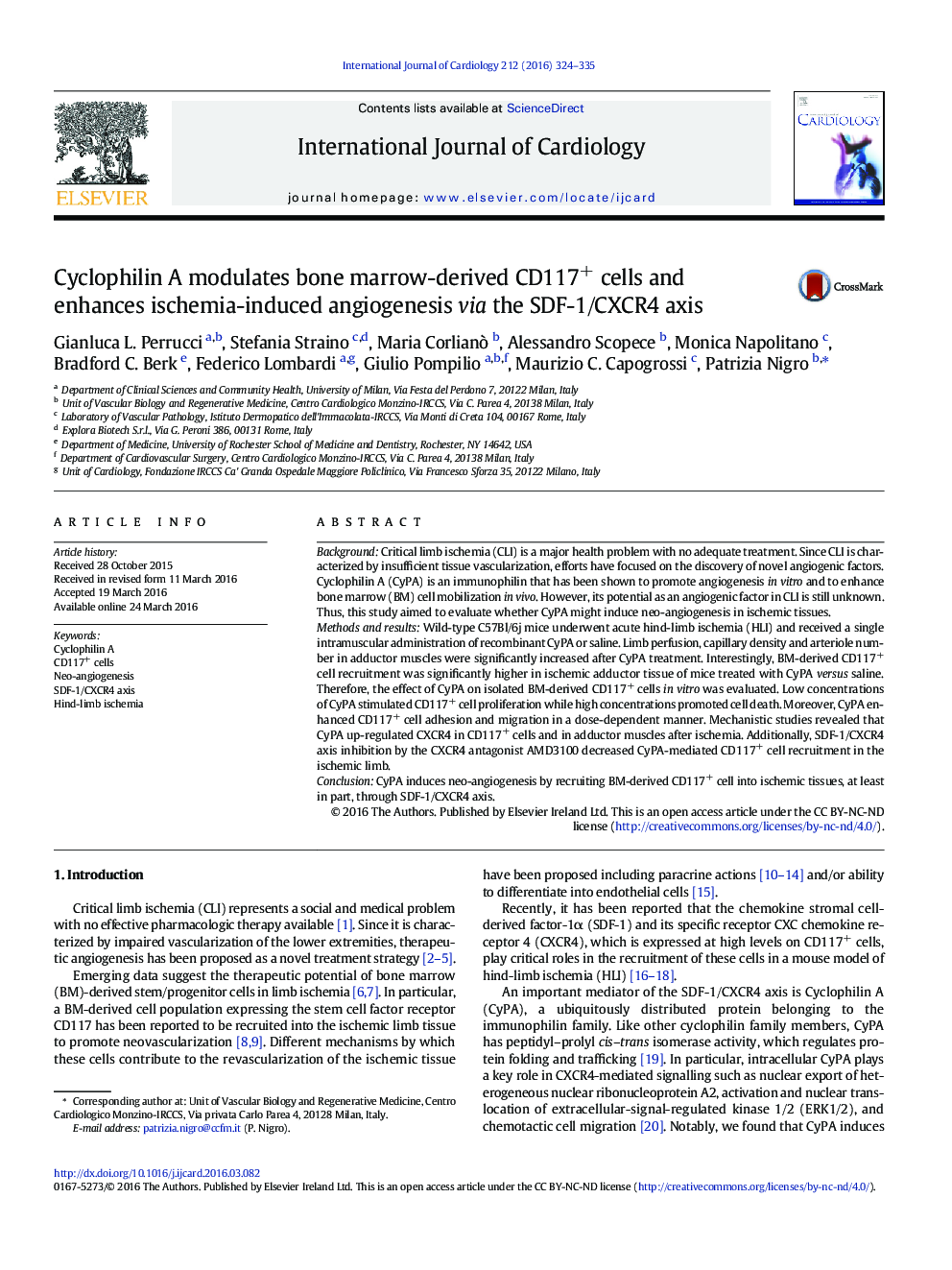| Article ID | Journal | Published Year | Pages | File Type |
|---|---|---|---|---|
| 5964393 | International Journal of Cardiology | 2016 | 12 Pages |
BackgroundCritical limb ischemia (CLI) is a major health problem with no adequate treatment. Since CLI is characterized by insufficient tissue vascularization, efforts have focused on the discovery of novel angiogenic factors. Cyclophilin A (CyPA) is an immunophilin that has been shown to promote angiogenesis in vitro and to enhance bone marrow (BM) cell mobilization in vivo. However, its potential as an angiogenic factor in CLI is still unknown. Thus, this study aimed to evaluate whether CyPA might induce neo-angiogenesis in ischemic tissues.Methods and resultsWild-type C57Bl/6j mice underwent acute hind-limb ischemia (HLI) and received a single intramuscular administration of recombinant CyPA or saline. Limb perfusion, capillary density and arteriole number in adductor muscles were significantly increased after CyPA treatment. Interestingly, BM-derived CD117+ cell recruitment was significantly higher in ischemic adductor tissue of mice treated with CyPA versus saline. Therefore, the effect of CyPA on isolated BM-derived CD117+ cells in vitro was evaluated. Low concentrations of CyPA stimulated CD117+ cell proliferation while high concentrations promoted cell death. Moreover, CyPA enhanced CD117+ cell adhesion and migration in a dose-dependent manner. Mechanistic studies revealed that CyPA up-regulated CXCR4 in CD117+ cells and in adductor muscles after ischemia. Additionally, SDF-1/CXCR4 axis inhibition by the CXCR4 antagonist AMD3100 decreased CyPA-mediated CD117+ cell recruitment in the ischemic limb.ConclusionCyPA induces neo-angiogenesis by recruiting BM-derived CD117+ cell into ischemic tissues, at least in part, through SDF-1/CXCR4 axis.
